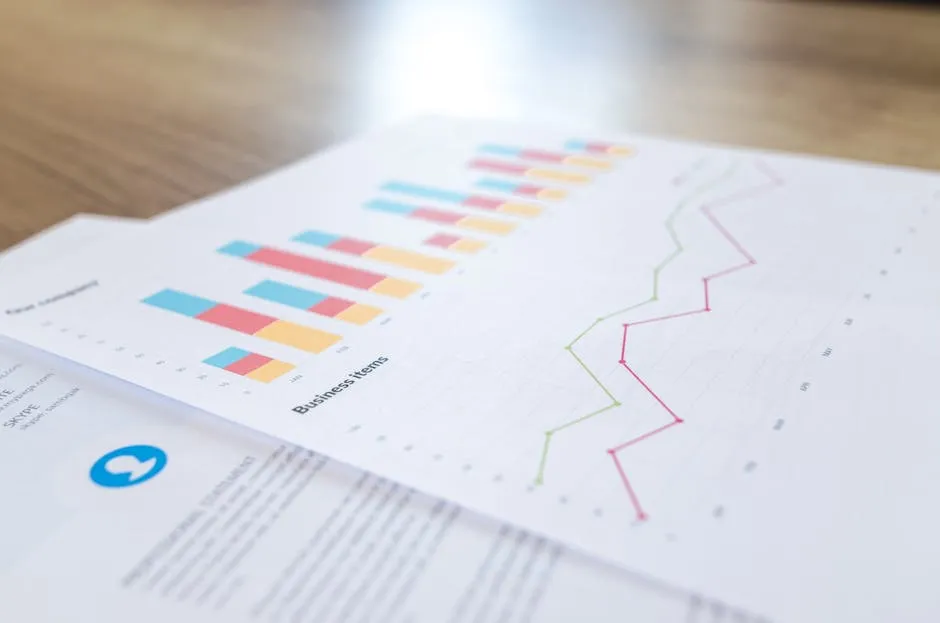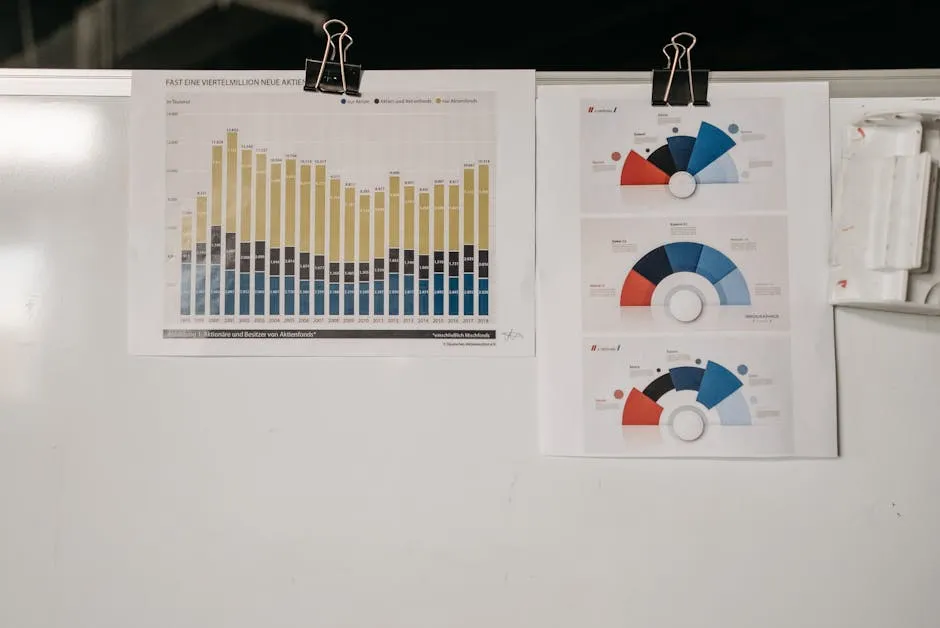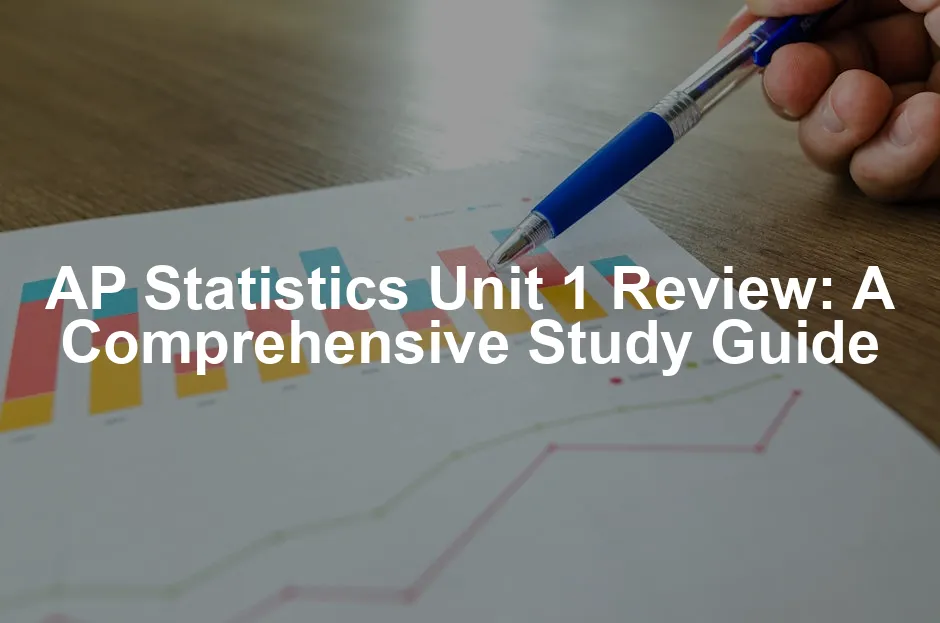Introduction
Welcome to the thrilling world of AP Statistics! This course is like a rollercoaster ride through data. You’ll twist, turn, and sometimes even scream as you navigate the fascinating landscape of numbers. Unit 1 is where the adventure begins, focusing on one-variable data. This unit is crucial because it lays the groundwork for everything else in statistics.
So, why should you care? Well, understanding one-variable data is essential for interpreting the world around you. It helps you make sense of everything from test scores to sports statistics. This review will cover key concepts such as types of data, measures of center, measures of spread, and graphical representations. By mastering these topics, you’ll sharpen your statistical skills and boost your confidence for the AP exam.
Throughout this unit, we will explore what data is, how to summarize it, and how to visualize it. You’ll learn to distinguish between categorical and quantitative data. You’ll understand measures like the mean, median, and mode. Plus, we’ll discuss how to identify outliers and what they mean for your analysis.
Preparing for the AP exam can feel overwhelming, but fear not! This review is designed to simplify your study process. By breaking down complex concepts and providing clear examples, you’ll walk away with a stronger grasp of statistics. Remember, statistics isn’t just about numbers; it’s about telling a story. So buckle up, and let’s get started on this statistical journey!
To help you on this journey, consider grabbing a reliable AP Statistics Exam Prep Book. It’s like having a friendly tutor guiding you through the maze of statistics—minus the awkward small talk!
Understanding One-Variable Data
What is One-Variable Data?
One-variable data is the foundation of statistical analysis. It refers to data that focuses on a single characteristic or variable. This means you can analyze data points without getting tangled in multiple variables. Understanding one-variable data is vital because it allows you to summarize and interpret the information efficiently.
There are two primary types of one-variable data: categorical and quantitative.
Categorical Data
Categorical data consists of distinct groups or categories. Think of it as sorting your socks by color. There are two subtypes of categorical data: nominal and ordinal.
- Nominal Data: This type has no inherent order. For example, consider blood types: A, B, AB, and O. There’s no ranking involved; they simply identify different groups.
- Ordinal Data: This type has a natural order, but the intervals between values aren’t consistent. For instance, education levels (like high school, bachelor’s, and master’s degrees) indicate a progression but don’t have equal differences.
Quantitative Data
Quantitative data involves numerical measurements that can be counted or measured. This data is further divided into discrete and continuous types.
- Discrete Data: This type consists of specific values. For example, the number of pets someone owns is discrete because you can’t have half a pet (unless you’re counting a goldfish, but that’s a different story!).
- Continuous Data: This type can take any value within a range. Think of height or weight; they can vary infinitely within a certain limit. For instance, someone could weigh 150.5 pounds or be 5.7 feet tall.
Importance of Data Exploration
Exploring one-variable data is critical in statistical analysis. It helps researchers summarize data, identify patterns, and draw conclusions. Whether you’re analyzing survey results or sports statistics, understanding one-variable data allows you to make informed decisions based on evidence rather than guesswork.
Real-world applications of one-variable data analysis are everywhere. For instance, businesses use customer feedback to improve products. Healthcare professionals analyze patient data to improve treatment plans. Educators assess student performance to tailor teaching strategies. In each case, one-variable data provides the clarity needed to make smart choices.
In summary, mastering one-variable data is a stepping stone to becoming a statistics whiz. With a solid understanding of data types and their significance, you’ll be well-prepared for further exploration in statistics. Let’s dive deeper into measures of center and spread next, where you’ll learn to summarize and describe your data effectively!
To help with your studies, consider investing in Statistics Made Simple in the Real World. It’s a great tool to simplify complex concepts and make statistics feel less daunting—like finding the missing sock in a laundry basket!
Measures of Center
Key Concepts
In the realm of statistics, measures of center are crucial. They summarize a dataset with a single value representing its central tendency. This section introduces the three main measures of center: the mean, median, and mode.
The Mean
The mean, often called the average, is calculated by summing all data points and dividing by the number of points. For example, if you have test scores of 85, 90, and 95, the mean is (85 + 90 + 95) / 3 = 90. Easy, right?
However, be careful with outliers! Outliers are values significantly higher or lower than the rest. They can skew the mean. For instance, if one student scored 20, the mean drops to 72.5. Not exactly reflective of the class’s performance, is it? This sensitivity makes the mean useful in symmetrical distributions but less reliable in skewed ones.
To ensure you’re calculating those means accurately, why not grab a Graphing Calculator? It’s like having a math wizard in your pocket—minus the robes and pointy hat!
The Median
Next up is the median. Imagine you have a line of friends, and you want to find the one in the middle. You’d simply order them by height. The median is the middle value in a sorted dataset. If there’s an even number of values, it’s the average of the two middle numbers.
Take the set {3, 5, 7, 9, 11}. The median is 7. Now, if we add an outlier, say 100, we get {3, 5, 7, 9, 11, 100}. The new median is still 7! This robustness against outliers makes the median a better measure in skewed distributions, providing a more accurate reflection of a dataset’s center.
The Mode
Finally, let’s talk about the mode. This is simply the value that appears most frequently in a dataset. For example, in the list {1, 2, 2, 3, 4}, the mode is 2. If you’re dealing with categorical data, like types of fruit, the mode helps identify the most common category.
Modes can be particularly interesting. You might have datasets with no mode, one mode, or even multiple modes! For instance, in {1, 1, 2, 2, 3}, both 1 and 2 are modes, making it bimodal. This feature can provide insights into the distribution of data, especially in qualitative analysis.
Practical Examples
Let’s illustrate these concepts with practical examples.
Mean Example: Imagine a teacher calculating the average score for a math test. The scores are {70, 75, 80, 85, 90}. The mean would be (70 + 75 + 80 + 85 + 90) / 5 = 80. However, if one student scored 10, the mean drops drastically to 66.
Median Example: Consider the ages of participants in a survey: {22, 25, 29, 31, 35}. The median age is 29. Adding an outlier, like a 70-year-old, shifts our dataset to {22, 25, 29, 31, 35, 70}. The median remains 29, showcasing the median’s resilience.
Mode Example: In a class survey on favorite colors, the responses are {blue, green, blue, red, green, blue}. Here, blue is the mode, as it appears most often. This information helps teachers understand student preferences.
Understanding these measures of center equips you to summarize data effectively, paving the way for further statistical analysis.
Measures of Spread
Overview of Spread
Measures of spread are just as important as measures of center. They give insights into how data points vary around the center. Understanding spread helps in identifying the consistency and variability of a dataset.
Key Measures
Range
The range is the simplest measure of spread. It’s calculated by subtracting the smallest value from the largest value in a dataset. For example, in the dataset {3, 7, 8, 12}, the range is 12 – 3 = 9.
However, the range has limitations. It only considers the extreme values and ignores the rest of the data. A small dataset could have a large range if it includes an outlier, misrepresenting the overall spread. For more insights on the range, you can explore orange county ca crime statistics.
Understanding the range is essential for interpreting data spread correctly. orange county ca crime statistics can provide you with a comprehensive overview of this measure.
Interquartile Range (IQR)
The interquartile range (IQR) improves upon the range by focusing on the middle 50% of data. It’s the difference between the first quartile (Q1) and the third quartile (Q3). For example, in the dataset {5, 7, 8, 12, 15, 18}, Q1 is 7 and Q3 is 15, so the IQR is 15 – 7 = 8.
IQR is particularly useful for identifying outliers. Values below Q1 – 1.5 * IQR or above Q3 + 1.5 * IQR are typically considered outliers. This makes IQR a robust measure of spread that minimizes the influence of extreme values.
Standard Deviation
Standard deviation is a more advanced measure of spread. It quantifies how much individual data points deviate from the mean. To calculate it, first find the mean, then determine each data point’s deviation from the mean, square it, average those squares, and finally take the square root.
For example, consider the dataset {4, 8, 6, 5, 3}. The mean is 5.2. The deviations from the mean are {-1.2, 2.8, 0.8, -0.2, -2.2}. Squaring these gives {1.44, 7.84, 0.64, 0.04, 4.84}. The average of these squares is 2.76, and the square root gives a standard deviation of about 1.66.
Standard deviation is sensitive to outliers, so while it provides a comprehensive view of spread, one must analyze data distributions carefully.
By mastering these measures of spread, you’re one step closer to becoming a statistical superstar! Understanding how data points vary will enhance your ability to analyze and interpret datasets.
Graphical Representations of Data
Types of Graphs
Visual representation is a powerful tool in data analysis. It helps us understand data distributions, identify trends, and communicate findings effectively. When numbers get too overwhelming, a good graph can save the day! Imagine trying to explain your favorite pizza toppings just with words—it’s much tastier to show a pie chart, right? Graphs make data digestible and engaging.
To enhance your graphing skills, consider using a Data Visualization: A Practical Introduction. It’s like a crash course in making your data look as good as it is informative!
Bar Graphs
Bar graphs are the superheroes of categorical data. They display the frequency of categories with rectangular bars. The height (or length) represents the count or proportion of each category. To create a bar graph, start by identifying your categories. For instance, let’s consider students’ favorite fruits: apples, bananas, and oranges.
- Collect Data: Survey your class. You might find 10 like apples, 15 prefer bananas, and 5 choose oranges.
- Draw the Axes: The vertical axis (y-axis) shows the number of votes, while the horizontal axis (x-axis) lists the fruit categories.
- Create the Bars: Draw a bar for each fruit, where the height corresponds to the number of votes.
Interpreting the bar graph is a breeze! You can instantly see that bananas are the top favorite, while oranges need some love. Easy peasy!
Histograms
Histograms take the spotlight when dealing with quantitative data distributions. They group numerical data into bins or intervals, allowing us to see how data is distributed across ranges. Think of it as organizing your sock drawer—size matters!
- Collect Your Data: Let’s say you recorded the ages of 20 students: {18, 19, 20, 20, 21, 21, 22, 23, 23, 23, 24, 24, 25, 25, 26, 27, 28, 29, 29, 30}.
- Determine Bins: Choose your intervals, like 18-20, 21-23, etc.
- Count Frequencies: Tally how many ages fall into each bin.
When you draw your histogram, the height of each bar shows the number of students in each age range. This visual helps you quickly identify age groups with more students, making it easier to spot trends or outliers.
Box Plots
Box plots, also known as whisker plots, are fantastic for summarizing data through the five-number summary: minimum, first quartile (Q1), median, third quartile (Q3), and maximum. They provide a clear picture of data distribution while being easy to interpret.
- Calculate the Five-Number Summary: For a dataset like {6, 7, 8, 9, 10, 10, 11}, you’d find:
- Minimum: 6
- Q1: 7.5
- Median: 9
- Q3: 10.5
- Maximum: 11
- Draw the Box: Start with a box from Q1 to Q3. Inside the box, draw a line at the median.
- Add Whiskers: Extend lines (whiskers) from the box to the minimum and maximum values.
This plot quickly reveals the data’s spread and center, while highlighting potential outliers.
Choosing the Right Graph
Selecting the appropriate graph is crucial for effective data representation. The choice hinges on data type and your analysis goals. For categorical data, bar graphs are the go-to. If you’re analyzing frequency distributions, histograms shine. Meanwhile, box plots excel in summarizing data spread and identifying outliers.
Consider your audience and the message you want to convey. A clear, well-chosen graph can communicate insights that paragraphs of text simply can’t. So, think of your graph as your data’s first impression—make it count!
Data Distribution Shapes
Symmetric Distributions
Symmetric distributions are like the perfect balance in a seesaw. Imagine a lovely bell curve where the two halves mirror each other. In these distributions, the mean, median, and mode are all in harmony, sitting right at the center. This balance indicates that data is evenly spread around the central point, making it easier to analyze.
A classic example of a symmetric distribution is the normal distribution. In this case, most data points cluster around the mean, creating a beautiful bell shape. With symmetric distributions, you can confidently use the mean as a measure of center since it accurately represents the data’s essence.
Skewed Distributions
Now, let’s shift gears to skewed distributions, where things get a little lopsided. Skewness refers to the asymmetry in a dataset. When we talk about right-skewed distributions, picture a long tail trailing off to the right. In this scenario, the mean is greater than the median, pulling the average up due to those pesky high values. A fine example is income distribution, where a few individuals earn significantly more than the rest.
On the flip side, left-skewed distributions have a tail that drags to the left. Here, the mean is less than the median, as low values pull the average down. An everyday example might be the age of retirement, where most people retire in their 60s but a few retire much earlier, creating that leftward tail.
Bimodal Distributions
Bimodal distributions are like a party with two popular dance floors! These distributions feature two distinct peaks, or modes, indicating that the dataset comprises two different groups. For instance, if you were analyzing the heights of a mixed-gender group, you might find one peak around 5’4″ for women and another around 5’10” for men.
Understanding bimodal distributions is crucial for data analysis. It alerts you to the presence of multiple underlying processes or populations. In practical terms, when you encounter a bimodal distribution, it’s a cue to dig deeper. You may need to segment your data to gain clearer insights into the different groups represented.
In summary, grasping these distribution shapes sets the stage for more advanced statistical analysis. Identifying whether your data is symmetric, skewed, or bimodal can guide your choice of measures of center and spread, helping you uncover the true story behind the numbers.
Conclusion
Recapping our statistical adventure, we’ve unraveled the essentials of AP Statistics Unit 1. This unit focused on one-variable data, a fundamental building block for understanding statistics. We explored data types, measures of center, measures of spread, and the beauty of graphical representations. Each of these components plays a pivotal role in statistical analysis, helping us make sense of data and draw meaningful conclusions.
Mastering these concepts is not just crucial for acing the AP exam; it’s a skill that extends beyond the classroom. Whether you’re interpreting sports statistics, analyzing survey results, or making business decisions, the ability to understand and manipulate one-variable data is invaluable. With a solid grasp of measures like mean, median, and mode, along with understanding spread through range and standard deviation, you’ll be well-equipped to face real-world data challenges.
As you continue your studies, remember that practice makes perfect. Engage with additional resources, tackle practice problems, and don’t shy away from asking questions. The world of statistics is ever-present, and the skills you develop now will serve you well in future academic pursuits and beyond. So, grab those practice quizzes and dive into the data—your future self will thank you!
For those late-night study sessions, consider investing in some highlighters to keep your notes colorful and engaging. Trust me, your brain will thank you for the visual stimulation!
FAQs
What are the key topics in AP Statistics Unit 1?
AP Statistics Unit 1 covers a variety of foundational topics. Key areas include: Types of Data: Understanding categorical versus quantitative data. Measures of Center: Learning about the mean, median, and mode. Measures of Spread: Analyzing the range, interquartile range (IQR), and standard deviation. Graphical Representations: Exploring bar graphs, histograms, and box plots. Data Distribution Shapes: Identifying symmetric, skewed, and bimodal distributions. Outliers and Their Impact: Recognizing outliers and their influence on statistical measures. Each of these topics is crucial for interpreting data effectively and making informed decisions based on statistical analysis.
How can I prepare effectively for the AP Statistics exam?
To prepare for the AP Statistics exam, consider these strategies: Review Key Concepts: Go over the important topics, especially those covered in Unit 1. Ensure you understand each concept thoroughly. Practice Problems: Work on a variety of practice problems to reinforce your understanding. Utilize resources like quizzes and past exams. Study Groups: Join or form study groups with classmates. Discussing concepts with peers can deepen your understanding. Online Resources: Take advantage of online platforms that offer video tutorials, interactive quizzes, and study guides tailored for AP Statistics. Time Management: Create a study schedule to cover all topics well before the exam date. This will help you avoid last-minute cramming. By following these tips, you’ll build confidence and be well-prepared for the AP exam.
Where can I find additional practice materials for Unit 1?
For more practice materials focused on Unit 1, try these resources: Fiveable: They offer study guides, practice quizzes, and community support specifically designed for AP Statistics. Khan Academy: This platform provides free tutorials and practice exercises on a wide range of statistics topics. Quizizz: Look for quizzes specifically targeting Unit 1 concepts to test your knowledge. AP Classroom: If your school provides access, utilize the resources available through the College Board’s AP Classroom for tailored practice. These platforms can help reinforce your understanding and prepare you for the exam.
What are some common pitfalls students face in Unit 1?
Students often encounter several challenges in Unit 1, including: Misunderstanding Data Types: Confusing categorical and quantitative data can lead to errors in analysis. Ignoring Outliers: Failing to identify outliers can significantly skew measures of center and spread. Calculation Errors: Simple arithmetic mistakes when calculating the mean, median, or standard deviation can affect results. Graphical Misrepresentation: Misreading or misinterpreting graphs can lead to incorrect conclusions about the data. To overcome these pitfalls, practice regularly and seek clarification on concepts you find challenging.
How can I apply statistical analysis in real-world scenarios?
Statistical analysis is everywhere! Here are some real-world applications: Healthcare: Analyzing patient data to improve treatment plans and outcomes based on statistics. Marketing: Companies use customer surveys to determine preferences and improve products based on statistical feedback. Education: Schools assess student performance through test scores to tailor teaching strategies effectively. Sports: Teams analyze player statistics to make informed decisions about trades, strategies, and game plans. In each of these fields, statistical concepts inform decisions and lead to improved outcomes. Embrace the power of statistics in your everyday life!
Please let us know what you think about our content by leaving a comment down below!
Thank you for reading till here 🙂















All images from Pexels




